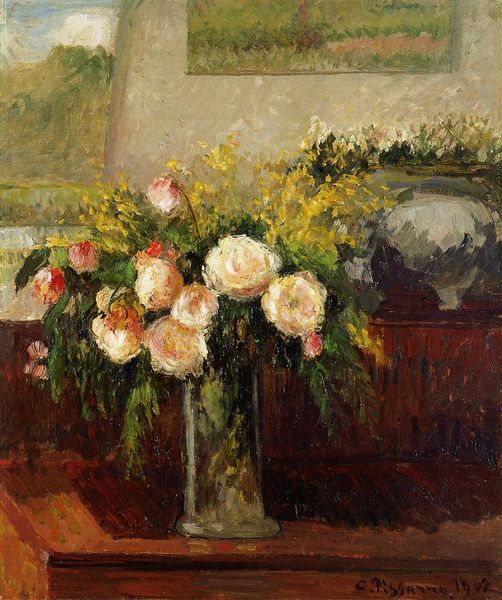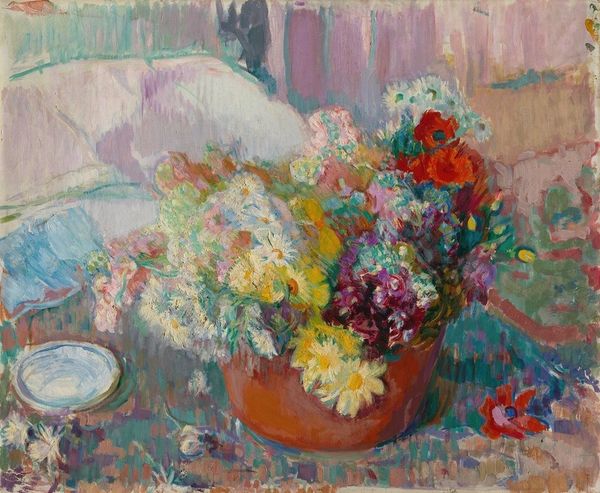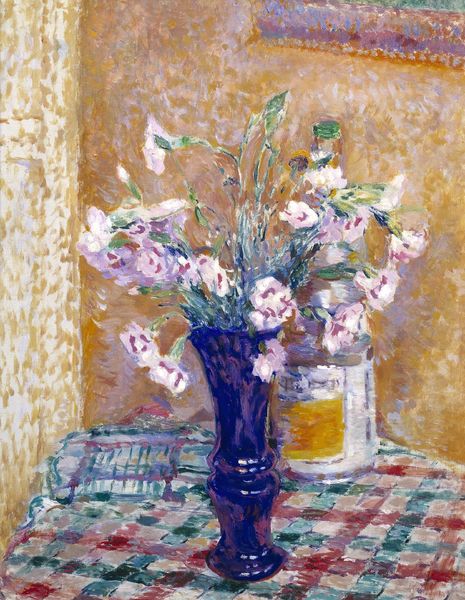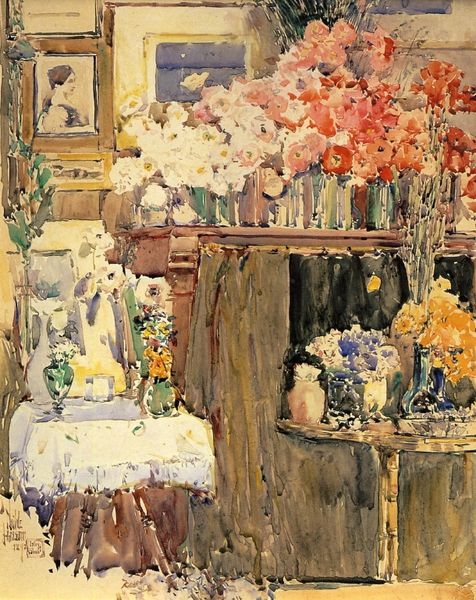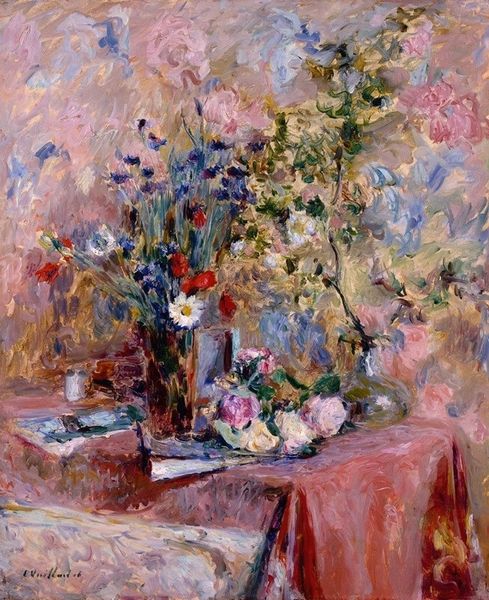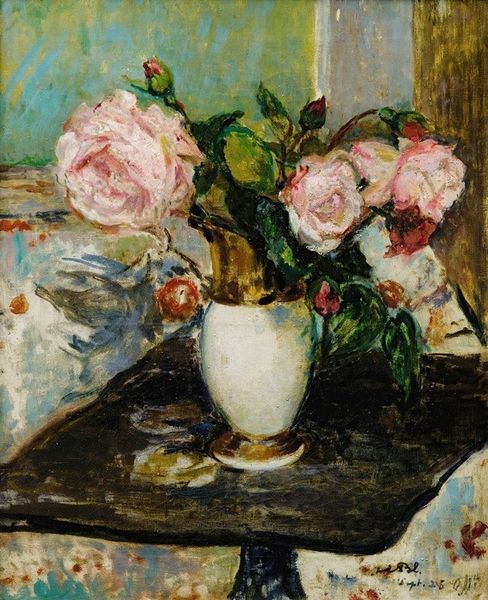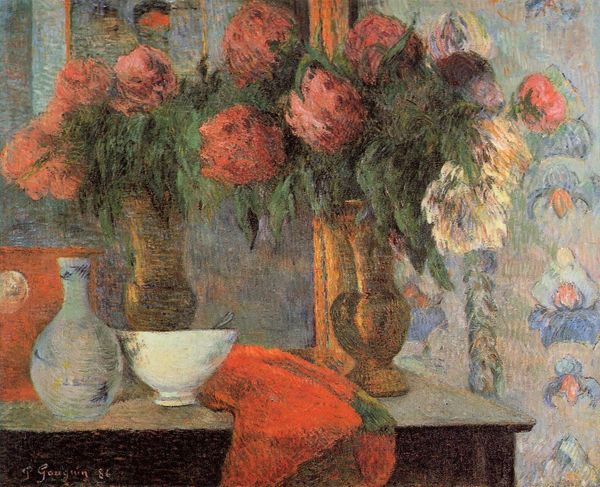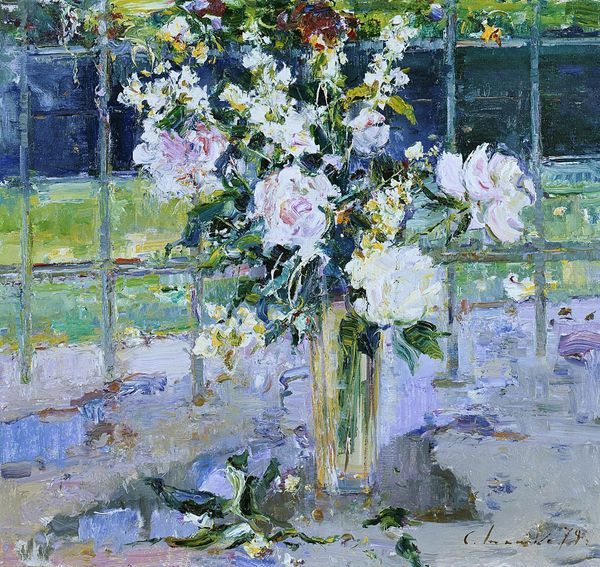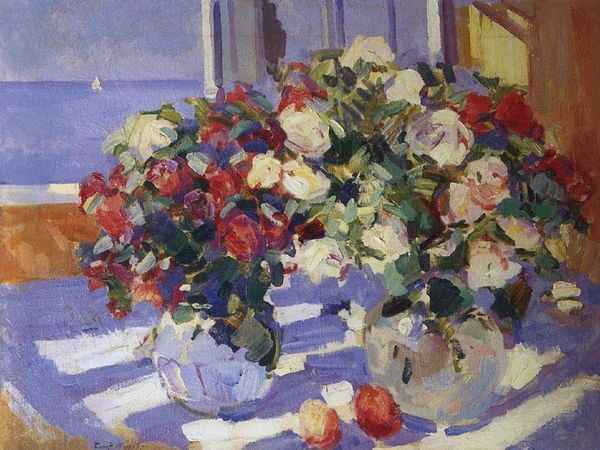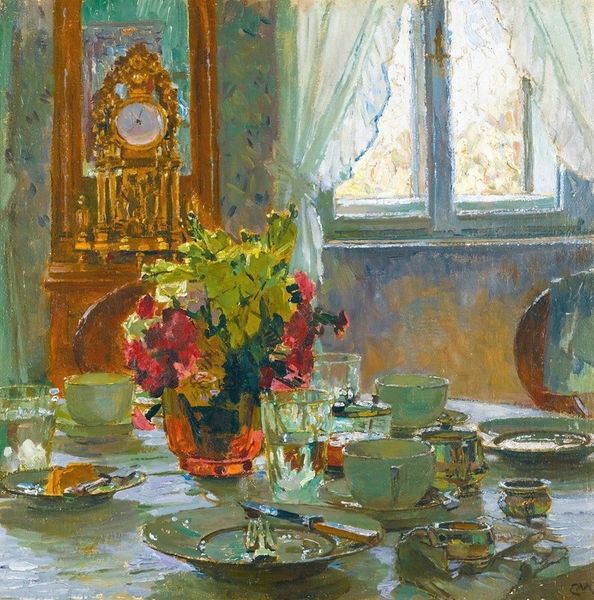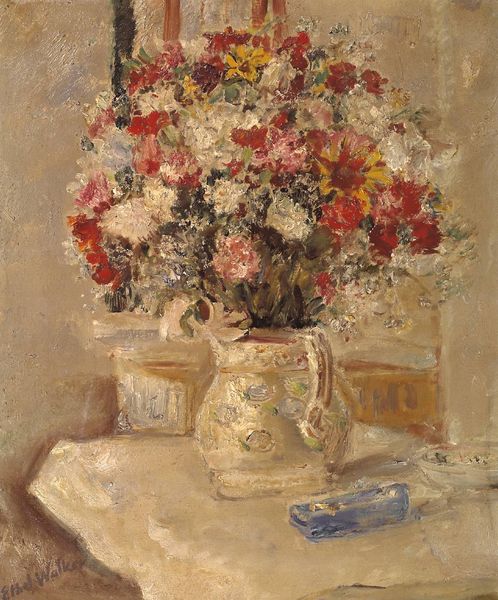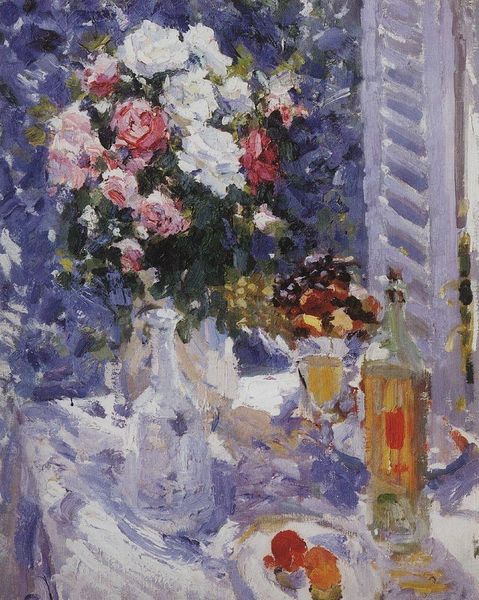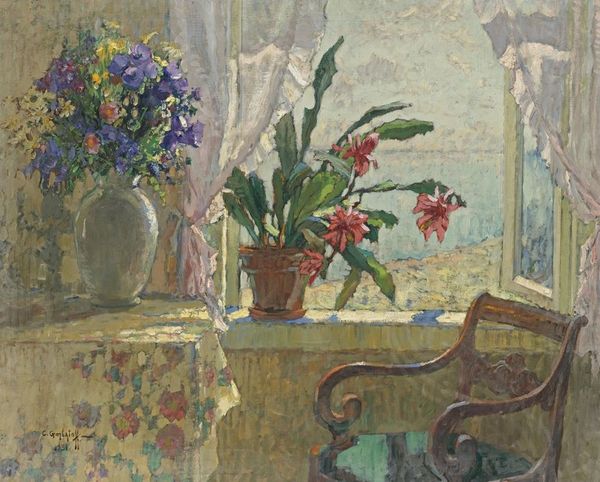
Dimensions: support: 550 x 460 x 18 mm frame: 678 x 588 x 45 mm
Copyright: © The estate of Ethel Sands | CC-BY-NC-ND 4.0 DEED, Photo: Tate
Editor: This is "Flowers in a Jug" by Ethel Sands, currently residing in the Tate Collections. It’s an oil painting and looks quite serene, almost domestic. What strikes you about this piece? Curator: Considering Sands' privileged background, this domestic scene can be read as both an embrace and a critique of the limited sphere allotted to women of her class. Does the window suggest confinement or a view to the outside world, a world from which she was excluded? Editor: That's a thought-provoking perspective. I hadn't considered the social implications of the setting. Curator: These quiet interiors can be potent statements when viewed through the lens of gender and class. It speaks volumes about the artist’s lived reality. Editor: I see what you mean. Thanks for sharing your insight. Curator: My pleasure. It's about seeing beyond the surface.
Comments
Join the conversation
Join millions of artists and users on Artera today and experience the ultimate creative platform.
tate 6 months ago
⋮
Ethel Sands was born in America, but grew up in Britain. She was wealthy, and owned houses in Chelsea, at Newington near Oxford and at Auppegard in Normandy, where Flowers in a Jug was probably painted. She was encouraged by the painter Walter Sickert (1860-1942), whom she had met first in 1906 when he expressed admiration for a picture she had sent to the Salon d'Automne in Paris and who had pursued her acquaintance. The following year Sickert invited her to join his newly-created Fitzroy Street Group which sought to promote a form of Impressionist naturalism in Britain. In the years 1906 to 1914 Sands was an important literary and artistic patron, and her house was one of the social centres of modern art in London. Sands's own painting was of a mild Anglo-French type comparable with that of her friend Jacques-Emile Blanche (1861-1942), although the late Impressionist control of colour Flowers in a Jug is comparable too with the pictures of Edouard Vuillard (1868-1940). The mantelpiece still life arrangement, and the visual conceit of the reflected image within the painting, are reminiscent of a small number of pictures by Sickert and some members of the Camden Town Group, such as Spencer Gore (1878-1914) with which Sands is likely to have been familiar. Further reading:Wendy Baron, Miss Ethel Sands and her Circle, London, 1977 Robert UpstoneFebruary 2002
